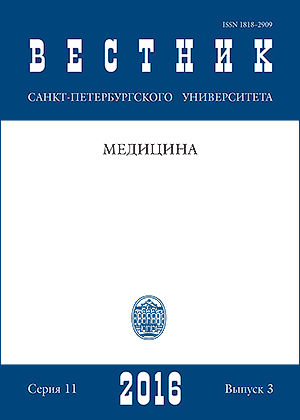MODERN ASPECTS OF PATHOGENESIS OF CALCIFICATION OF THE AORTIC VALVE
DOI:
https://doi.org/10.21638/11701/spbu11.2016.302.Abstract
Aortic valve calcification with accompanying stenosis is the predominant reason for cardiac valve replacement. Lack of medical treatments, together with a high frequency of occurrence of calcific aortic
stenosis represent one of the main problems in cardiological practice. New observations in human aortic valves support the hypothesis that calcific valvular aortic stenosis is the result of active bone formation in the aortic valve, which may be mediated through a process of osteoblast-like differentiation in these tissues. Although there are similarities with the risk factor as well as with the process of atherogenesis, not all the patients with coronary artery disease or pathogenesis exhibit aortic valve stenosis. Modern pathogenesis of the calcific aortic stenosis is presented in the article which also provides its comparative characteristics with atherosclerosis. Refs 51. Figs 3. Table 1.
Keywords:
aortic valve, aortic stenosis, сalcification, osteoprotegerin, RANKL, RANK, atherosclerosis, endothelial dysfunction, matrix metalloproteinases, Wnt signaling
Downloads
References
osteoclast differentiation factor in osteoclastogenesis // Biochem. Biophys. Res. Commun. 1998. No 253. P. 395–400.
References
lymphocytes: implications for lipid-induced bone loss. Clin. Immunol., 2009, no. 133, pp. 265–275.
Downloads
Published
How to Cite
Issue
Section
License
Articles of "Vestnik of Saint Petersburg University. Medicine" are open access distributed under the terms of the License Agreement with Saint Petersburg State University, which permits to the authors unrestricted distribution and self-archiving free of charge.




